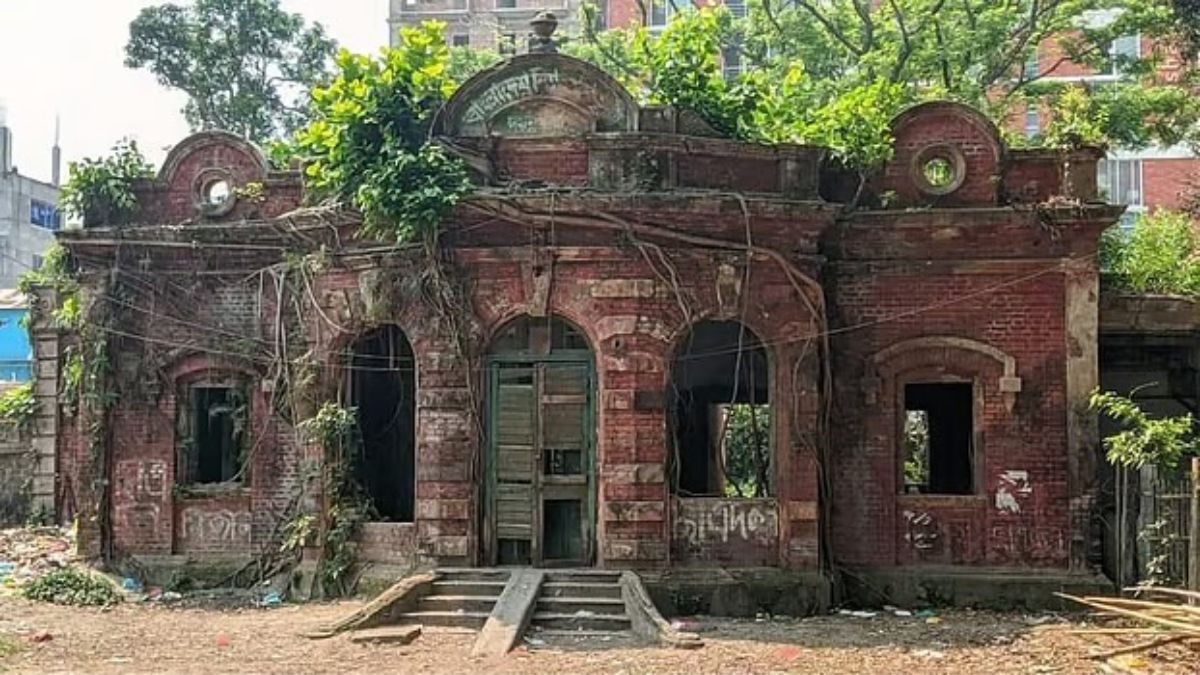EXCLUSIVE | 'We love Satyajit Ray!': Bangladesh halts ancestral home demolition following MEA India request

Bangladesh has acted on India’s concerns over the proposed demolition of legendary filmmaker and writer Satyajit Ray’s ancestral home in Mymensingh, pausing all activity at the site and initiating discussions between its Department of Archaeology and the district administration.
Within hours of the Indian Ministry of External Affairs (MEA) expressing regret and offering restoration support, Bangladeshi officials told THE WEEK that the demolition had been halted.
Dhaka, on its part, has also admitted that there was a lapse as the one-storey building in Mymensingh was not listed as a protected heritage centre. There are around 531 protected structures in Bangladesh at the moment, and based on recent recommendations from the Indian High Commission, three new sites have been added to the protected list.
Speaking exclusively to THE WEEK, Faisal Mahmud, press minister of the Bangladesh High Commission in New Delhi, said that there is a misunderstanding that the Bangladesh government wanted to demolish the house.
“First of all, this particular one-storey building in Mymensingh was never listed as a protected heritage structure. That was a lapse on our part. We understand that.”
“Usually, houses like this—especially one connected to someone like Satyajit Ray, who is so dear to us—should have been protected. I grew up reading his books; he was one of my favourite writers. Feluda, the fictional character in the ever popular adventures of Satyajit Ray, was my idol. We love Satyajit Ray.”
Faisal explains that the ancestral house originally belonged to literary icon Upendrakishore Ray, located on the Harikishore Ray Chowdhury road (named after Satyajit Ray’s ancestors).
“We respect them deeply. But the house belongs to Shishu Academy, which is essentially the Children’s Academy: an institution under the Bangladesh government. They used this building to hold classes and extracurricular activities for children.”
However, since February 2007, the Academy had stopped using the building because it had become too old and unsafe. “They feared that conducting classes inside might pose a risk to the children. That is why the building has remained in disuse since then”. Faisal noted that it was unfortunate that no one wrote to the Department of Archaeology to have it declared a heritage structure. “That was a failure on the part of the district administration.”
Since the building was not under heritage protection, the Shishu Academy decided they needed to use the space to build a new, safer structure for classes. This paved the way for the proposed demolition of the old building and construction of a new one.
However, once that decision was taken, explains Faisal, an officer from the district archaeological department wrote to the Shishu Academy, urging them not to go ahead with the demolition while pointing out the historical importance of the structure. “In fact, the Department of Archaeology wrote officially to the Shishu Academy, asking them to pause the demolition.”
The sequence of events demonstrate that the Bangladesh government itself did not order the demolition. “So it’s not exactly accurate to say that the government unilaterally decided to demolish it. One part of the government—the archaeological department—asked another part, the Shishu Academy, to halt the demolition. Since the issue attracted a lot of media attention, the Bangladesh government has now put the demolition on hold,” says Faisal.
The Department of Archaeology and the district administration are now holding meetings to decide on the next steps for a “positive” outcome.
The Bangladesh government is also positively considering taking India’s help in repairing and restoring the original grandeur of the structure.
“Satyajit Ray belongs to the entire Indian subcontinent, if not the entire world. He is an Oscar winner, someone universally respected. We understand and deeply respect the Indian sentiment.” Faisal says that Dhaka was grateful to the Indian Ministry of External Affairs for expressing concern. “The Bangladesh government has an honest intention to preserve the building. We want to ensure that the structure is protected. There is no debate about that.”
Interestingly, there are around 531 protected structures in Bangladesh . Based on recent recommendations from the Indian High Commission, three new sites were added to the protected list recently. “There are many such historical structures across Bangladesh. The Indian High Commission in Bangladesh often makes recommendations to the Department of Archaeology about preserving certain sites,” says Faisal. However, with limited manpower, the department isn’t always equipped to conduct surveys and identify all heritage structures.
“In fact, very close to the Harikishore Ray house is another protected structure called the Shashi Lodge, which belonged to a Hindu zamindar. That building is protected. So yes, we do have an honest intention of preserving our cultural heritage,” says Faisal.
Given the shared cultural heritage and the strong bonds between India and Bangladesh, Faisal urged both countries to focus on strengthening cultural ties. “Across the subcontinent, whether in India, Bangladesh, or even Pakistan, we find deep cultural commonalities. These shared values must be prioritised.”
“Culture should always rise above the dogmas and prejudices of politics. If we fail to protect our cultural heritage, we lose something we can never recover. India and Bangladesh must continue working together to preserve what we have inherited from our shared past,” he says.
World